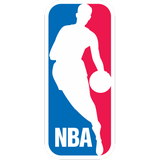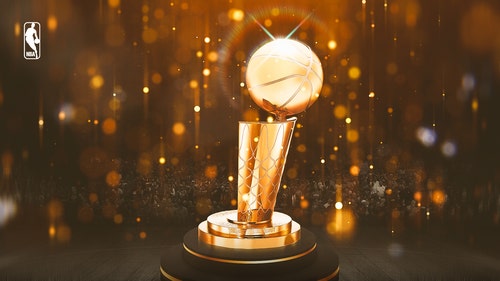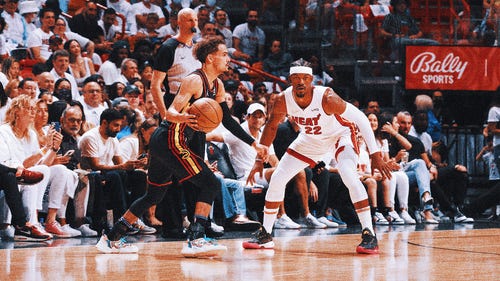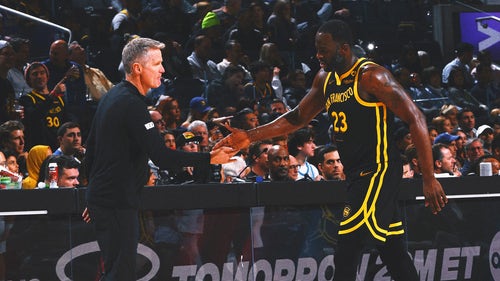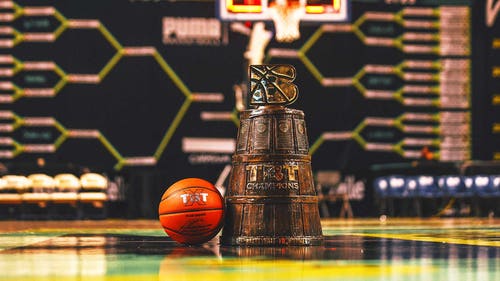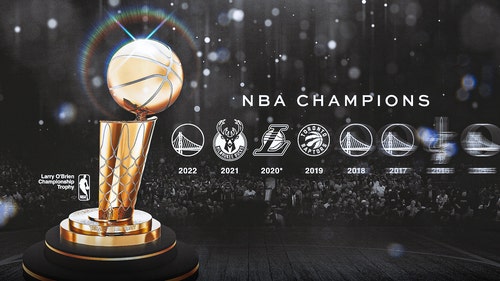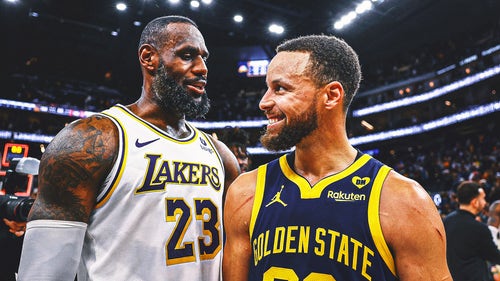
2017 NBA Draft: 5 potential busts

Mar 11, 2017; Brooklyn, NY, USA; Duke Blue Devils forward Harry Giles (1) reacts after a dunk against the Notre Dame Fighting Irish during the first half of the ACC Conference Tournament final at Barclays Center. Mandatory Credit: Brad Penner-USA TODAY Sports
Even though the 2017 NBA Draft class is extremely deep, there is still a range of potential busts that teams will be wary of selecting.
In what could be one of the best draft classes in years, there's still room for caution. Infatuation with those expected to go in the lottery of the 2017 NBA Draft is only growing, but as history reminds us, there are very few sure things.
With a deeper lottery than most years, the boom or bust prospects fall more in the late first round and second round. Finding diamonds in the rough in these areas is a general manager's dream. But for every Isaiah Thomas there are scores of players taken late in the draft who don't pan out. There's a reason plenty of general managers opt for international players they can stash overseas every year.
While I am a pretty big fan of this draft, especially in the 25-40 range, there are certainly some players to be worried about. Here are the five biggest bust candidates in the 2017 NBA Draft.

March 17, 2017; Sacramento, CA, USA; Creighton Bluejays center Justin Patton (23) during the second half in the first round of the 2017 NCAA Tournament against the Rhode Island Rams at Golden 1 Center. The Rams won 84-72. Mandatory Credit: Kyle Terada-USA TODAY Sports
5. Justin Patton, C, Creighton
Justin Patton is one of many big men who will be considered after the lottery. Zach Collins is really the only high quality prospect, though Jarrett Allen from Texas has some momentum. This collection of big men is very raw. Most of them, like Patton, have amazing physical profiles, making them intriguing for teams who think they can unlock that athletic potential.
A near seven-footer with a solid standing reach, Patton has excellent size to be utilized as a center in the NBA. However, he doesn't have a great feel for the game, especially on defense. In taking in more of a project, you'd want more legitimate two-way potential. And there's this red flag from Draft Express:
"While Patton plays with a solid activity level, he's a little hesitant to play through contact, and NBA teams will want him to become more aggressive around the rim while learning to be able to finish while also getting fouled."
Between of his soft reputation, his inability to rebound at a strong level (only 6.2 rebounds per game), and uncertainty over his jump shot, there are far better big men to take a gamble on this year.

Mar 10, 2017; Las Vegas, NV, USA; California Golden Bears forward Ivan Rabb (1) look to pass while being guarded by Oregon Ducks forward Kavell Bigby-Williams (35) and forward Chris Boucher (25) during the Pac-12 Conference Tournament at T-Mobile Arena. Mandatory Credit: Stephen R. Sylvanie-USA TODAY Sports
4. Ivan Rabb, PF/C, California
In addition to Patton, Ivan Rabb is another big man I'm worried about. Rabb, from a basketball perspective, made a mistake by returning to school this year. He would have been a late lottery pick in 2016. In going back to school, Rabb did not get considerably better or dominate Pac-12 play. His production decreased in major areas such as field goal percentage and blocks.
What's troubling about Rabb is I'm not sure what exactly he projects to be as an NBA big man. He lacks the height and wingspan of most centers, has a poor free throw percentage — indicating doubts over his shooting potential — and he can't protect the rim or defend in space.
Watch Rabb above on the far side of the court. Not only does he embarrassingly get lost in the screen, but it wasn't even to a guard. Rabb looked that slow chasing a stretch big in Josh Hawkinson.
So for a prospect who doesn't project well on defense and who couldn't shoot or score well after going back to school, Rabb is not a first round talent. I'm just not sure how he'd stay in the league, especially with a good big man class coming in 2018.

Mar 31, 2017; Phoenix, AZ, USA; Oregon Ducks forward Dillon Brooks during practice for the 2017 Final Four at University of Phoenix Stadium. Mandatory Credit: Robert Deutsch-USA TODAY Sports
3. Dillon Brooks, SF, Oregon
Dillon Brooks might be this year's Buddy Hield in some ways. Brooks obviously isn't going in the lottery, but they have some things in common. Both were older players who dominated college basketball and got a ton of praise. Brooks and Hield also each took their team to the Final Four. The other thing they have in common is they really only have one NBA skill.
For Hield, it was shooting. For Brooks, it might be the same thing. These two were dynamic college scorers, but neither looks like they're going to be able to do much off the dribble against elite NBA length. Brooks is an okay athlete who shot over 40 percent from three this season. He's a physical player, but measured just 6-foot-6 at the NBA Draft Combine with a poor wingspan.
Brooks is not quick enough to guard the best wings in the NBA and was usually a minus on defense for Oregon. He's also too small to guard most 4s. Since he's already 21, his only hope might be developing as a sharp shooter.
Take a flier on Brooks as an undrafted free agent, but not with one of the 60 picks in the draft. It's going to be hard to forget about his infamous flop too.

Mar 17, 2017; Greenville, SC, USA; Duke Blue Devils forward Harry Giles (1) shoots the ball against Troy Trojans forward Alex Hicks (30) during the first half in the first round of the 2017 NCAA Tournament at Bon Secours Wellness Arena. Mandatory Credit: Bob Donnan-USA TODAY Sports
2. Harry Giles, PF/C, Duke
I really want Harry Giles to bounce back and succeed. He would be a fantastic addition to the NBA and especially to the growing number of promising big men in the league. However, after multiple knee injuries and a shocking freshman year at Duke, he's one of, if not the riskiest player in the draft.
Giles had next to no confidence at Duke and it will probably take a long time for him to get back to a respectable level. Back in high school, Giles could do it all on both ends of the floor. If an NBA team can get him back to half the player he was, he's a steal. That scenario seems very murky right now, which is sad because this kid balled out in high school.
We're looking at one of the biggest boom-or-bust prospects in recent memory. He may be worth a flier to a team with multiple picks like Brooklyn, but Giles' fit is more important than almost any other prospect.
Putting him in an environment like San Antonio would be his best bet, but there's a high chance that's not where he ends up. Giles needs a lot of hands-on attention and development. It's very possible the former No. 1 high school player in the country just never pans out.

Mar 26, 2016; Chicago, IL, USA; McDonalds All American guard Terrance Ferguson (6) poses for photos on portrait day at the Marriott Hotel. Mandatory Credit: Brian Spurlock-USA TODAY Sports
1. Terrance Ferguson, SG, Adelaide
Harry Giles is not No. 1 because on the rare chance someone turns him around, he will be a very good NBA player. The same can't really be said for Terrance Ferguson. Like Emmanuel Mudiay and Brandon Jennings before him, Ferguson went pro for a year after high school. Having the chance to send money home and mature is incredibly valuable, but he didn't exactly have a killer season overseas.
Ferguson couldn't earn a lot of playing time and didn't do much with it. Yet, three weeks before the draft, he's projected as a first round pick. Some sites and writers have him closer to the lottery than the second round. Maybe it's his reputation as an All-American, but too many are assuming he's going to just slide right into a solid 3-and-D role.
That archetype is still one of the hardest to find in the league. Ferguson is more likely to turn into more of another Terrence — Terrence Ross, that is. Even Ross had some isolation scoring capability though. Ferguson does not.
He'll likely have flashes where he's shooting well and he'll compete on defense. Yet especially after not seeing much of him and after he got so few minutes, we don't have a lot to go off of. Ferguson is the 3-and-D prospect we get ourselves talked into, who actually is neither an elite shooter nor a lockdown defender. Beware.
More from Hoops Habit
This article originally appeared on
